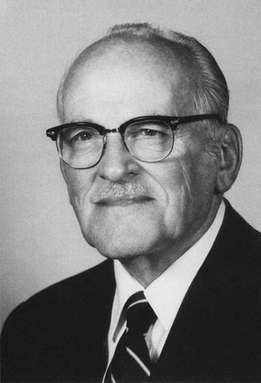Francis O. Schmitt facts for kids
Quick facts for kids
Francis O. Schmitt
|
|
|---|---|
 |
|
| Born | November 23, 1903 St. Louis, Missouri, United States
|
| Died | October 3, 1995 (aged 91) |
| Nationality | American |
| Citizenship | American |
| Alma mater | Washington University in St. Louis |
| Known for | Electron microscopy |
| Awards | Albert Lasker Award (1956), Alsop Award in 1947, and the T. Duckett Jones Award in 1963 |
| Scientific career | |
| Fields | Biology |
| Institutions | MIT |
| Doctoral students | Otto Schmitt Marie Jakus |
Francis Otto Schmitt (born November 23, 1903 – died October 3, 1995) was an important American biologist. He was a special professor at the Massachusetts Institute of Technology (MIT). He helped us understand how our bodies work at a tiny, tiny level.
Contents
Early Life and Education
Francis Schmitt was born in St. Louis, Missouri, on November 23, 1903. His parents were Otto and Clara Schmitt. He had two siblings, Otto and Viola.
Francis went to Washington University in St. Louis. He earned his first degree in 1924 and his Ph.D. in 1927. In 1923, during a summer program, he worked at the Marine Biological Laboratory. This was a great place for scientists to do research. There, he worked with famous scientists like Jacques Loeb and Thomas Hunt Morgan.
Discovering Body Secrets
After finishing his studies, Francis Schmitt became a teacher in 1929. He taught zoology, which is the study of animals. He taught there until 1941.
He worked closely with Arthur Compton, a Nobel Prize winner. They used a special method called X-ray diffraction. This method helps scientists see the tiny structures of things. They used it to study important parts of the body, like muscles and nerves.
Amazing Discoveries with Microscopes
Francis Schmitt and his team did amazing work. They studied important proteins in our bodies. These included collagen, which is found in skin and bones. They also looked at muscles and the tiny fibers in nerves.
In 1952, Schmitt was teaching two students about a new tool called the electron microscope. This microscope lets you see things that are incredibly small. Using this new technology, these students came up with a huge idea. It was called the Sliding Filament Theory. This theory explains how our muscles contract and move. His lab was always making exciting new discoveries.
Leading Science at MIT
In 1941, Francis Schmitt was asked to join MIT. Two important leaders, Karl Compton and Vannevar Bush, wanted him to lead a brand new department. This department would combine different sciences. It would bring together biology, physics, math, and chemistry.
Schmitt became an expert in electron microscopy. He used this skill to study many things. He looked at how kidneys work and how body tissues use energy. He also studied the chemistry and electricity of nerves.
In 1955, he became an "Institute Professor," a very high honor at MIT. He retired in 1973.
Founding Neuroscience
In 1962, Francis Schmitt helped start something very important. It was called the Neurosciences Research Program. This program brought together scientists who studied the brain and nervous system. He was the leader of this program from 1962 to 1974.
Francis Schmitt was a member of important science groups. These included the National Academy of Sciences and the American Philosophical Society. He also led the Electron Microscope Society of America. He received several awards for his work. These included the Albert Lasker Award in 1956 and the T. Duckett Jones Award in 1963.

